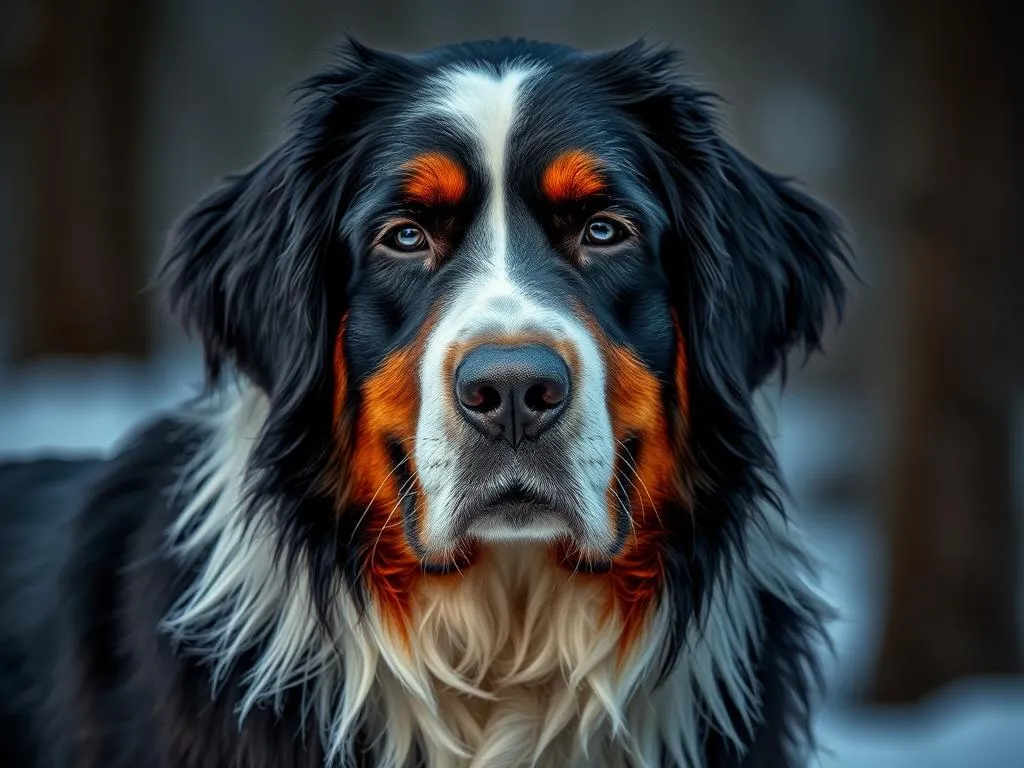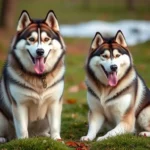
Introduction
The Bernese Mountain Dog is a beloved breed known for its striking appearance, gentle nature, and loyalty. With their tri-color coats and large stature, they make an impression wherever they go. However, potential owners often wonder, do Bernese Mountain Dogs shed? Understanding shedding is crucial for anyone considering adding a dog to their family, as it can affect allergies, cleaning routines, and overall dog care. This article delves into the shedding patterns of Bernese Mountain Dogs, their grooming needs, and how to manage shedding effectively.
Understanding Shedding in Dogs
Shedding is the natural process through which dogs lose old or damaged hair to make way for new growth. This cycle is influenced by various factors, including the dog’s breed, health, and environment.
Reasons Why Dogs Shed
-
Seasonal Shedding: Many dogs experience shedding during seasonal changes, particularly in spring and fall. This is part of their adaptation to changing temperatures.
-
Health-related Shedding: Conditions such as allergies, infections, or hormonal imbalances can lead to increased shedding. It’s essential to monitor your dog’s coat and skin health.
-
Breed-specific Shedding Patterns: Different breeds have unique shedding styles. Some breeds are known to shed more than others, and understanding these patterns can help owners prepare for their grooming needs.
Overview of Bernese Mountain Dogs
Description of the Breed
The Bernese Mountain Dog is a large, sturdy breed with a thick, long coat. They typically weigh between 70 to 115 pounds and stand about 23 to 28 inches tall at the shoulder. Their distinctive tri-color coat consists of black, white, and rust markings, making them one of the most recognizable breeds.
Temperament and Personality Traits
Bernese Mountain Dogs are known for their friendly and easygoing nature. They are affectionate with families and gentle with children, making them excellent family pets. Additionally, they possess a strong work ethic, often used as therapy and working dogs due to their intelligence and loyalty.
Popularity and Common Uses
Due to their temperament and adaptability, Bernese Mountain Dogs are popular as family pets and working companions. They thrive in environments where they can interact with people and enjoy outdoor activities, including hiking and herding.
Shedding Patterns of Bernese Mountain Dogs
Seasonal Shedding Cycles
Bernese Mountain Dogs typically shed more during the spring and fall when they transition between their winter and summer coats. This can lead to noticeable fur around the house, requiring extra attention during these times.
Differences Between Male and Female Shedding
While both male and female Bernese Mountain Dogs shed, males may shed slightly more due to their larger size and hormonal differences. However, individual shedding patterns can vary based on factors like health and age.
Factors Influencing Shedding in Bernese Mountain Dogs
-
Age of the Dog: Puppies may shed less than adults, but as they mature, shedding patterns will change. Older dogs may also experience changes in shedding due to health issues.
-
Health Considerations: Any underlying health problems, such as skin infections or allergies, can lead to increased shedding. Regular veterinary check-ups can help maintain your dog’s coat health.
-
Environmental Factors: Changes in weather, humidity, and exposure to allergens can affect how much a Bernese Mountain Dog sheds. For instance, a dog living in a humid climate may shed differently than one in a dry environment.
Grooming Needs for Bernese Mountain Dogs
Importance of Regular Grooming
Regular grooming is essential for maintaining the health of a Bernese Mountain Dog’s coat and reducing shedding. A well-groomed dog is less likely to develop skin issues and can enjoy a more comfortable life.
Recommended Grooming Tools
-
Brushes and Combs: A slicker brush is excellent for removing loose hair and preventing matting. A wide-toothed comb can help detangle knots without damaging the hair.
-
Bathing Products: Use a gentle dog shampoo specifically formulated for long-haired breeds to maintain coat hydration and health.
Grooming Schedule
-
Frequency of Brushing: Aim to brush your Bernese Mountain Dog at least once a week. During shedding seasons, increase this to two to three times a week to manage loose hair.
-
Seasonal Grooming Tips: Before the shedding seasons, consider scheduling a professional grooming session. This can help remove excess fur and prepare your dog for the upcoming changes.
Managing Shedding in Bernese Mountain Dogs
Tips for Minimizing Shedding
-
Diet and Nutrition Considerations: A high-quality diet rich in omega fatty acids can promote a healthy coat and minimize excessive shedding. Consult your veterinarian for recommendations on the best food for your dog.
-
Hydration and Its Impact on Coat Health: Keeping your Bernese Mountain Dog well-hydrated is essential. Proper hydration supports skin health and can reduce shedding.
Home Care Strategies
-
Vacuuming and Cleaning Tips: Invest in a vacuum cleaner designed for pet hair to make cleaning more efficient. Regularly vacuum carpets, upholstery, and any areas your dog frequents.
-
Furniture Covers and Lint Rollers: Use furniture covers to protect your upholstery from dog hair, and keep lint rollers handy for quick clean-ups on clothing and surfaces.
Health Implications Related to Shedding
Common Health Issues That May Increase Shedding
Certain health conditions can lead to increased shedding in Bernese Mountain Dogs. Common issues include:
-
Allergies: Dogs can be allergic to various environmental factors, such as pollen, dust mites, or certain foods, leading to itchy skin and increased shedding.
-
Skin Conditions: Conditions like dermatitis or infections can also result in hair loss and excessive shedding.
When to Consult a Veterinarian About Shedding
Monitor your Bernese Mountain Dog for signs of abnormal shedding, such as:
-
Patches of Hair Loss: If you notice bald spots or uneven shedding, consult your veterinarian.
-
Other Symptoms to Watch For: Pay attention to any changes in behavior, appetite, or energy levels, as these can indicate underlying health issues.
Conclusion
In summary, do Bernese Mountain Dogs shed? Yes, they do, and understanding their shedding patterns is vital for any owner. Regular grooming, proper nutrition, and monitoring health can help manage shedding effectively. By taking responsible care of your Bernese Mountain Dog, you can enjoy the companionship of this gentle giant while keeping your home clean and comfortable.
Additional Resources
While this article provides a comprehensive overview, consider exploring grooming tools, reputable reading materials on Bernese Mountain Dogs, and consulting with veterinarians to gain further insights into your dog’s needs.
FAQ Section
Do all Bernese Mountain Dogs shed the same amount?
Not necessarily. Shedding can vary based on factors such as age, health, and individual differences between dogs.
What is the best brush for a Bernese Mountain Dog?
A slicker brush is highly recommended for managing their long, thick coat, along with a wide-toothed comb for detangling.
How can I reduce allergies caused by dog shedding?
Regular grooming, maintaining a clean home, and ensuring your dog has a balanced diet can help reduce allergens associated with shedding. Consider consulting an allergist for personalized advice.






